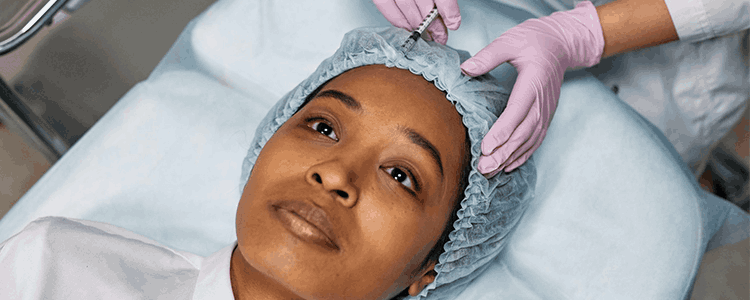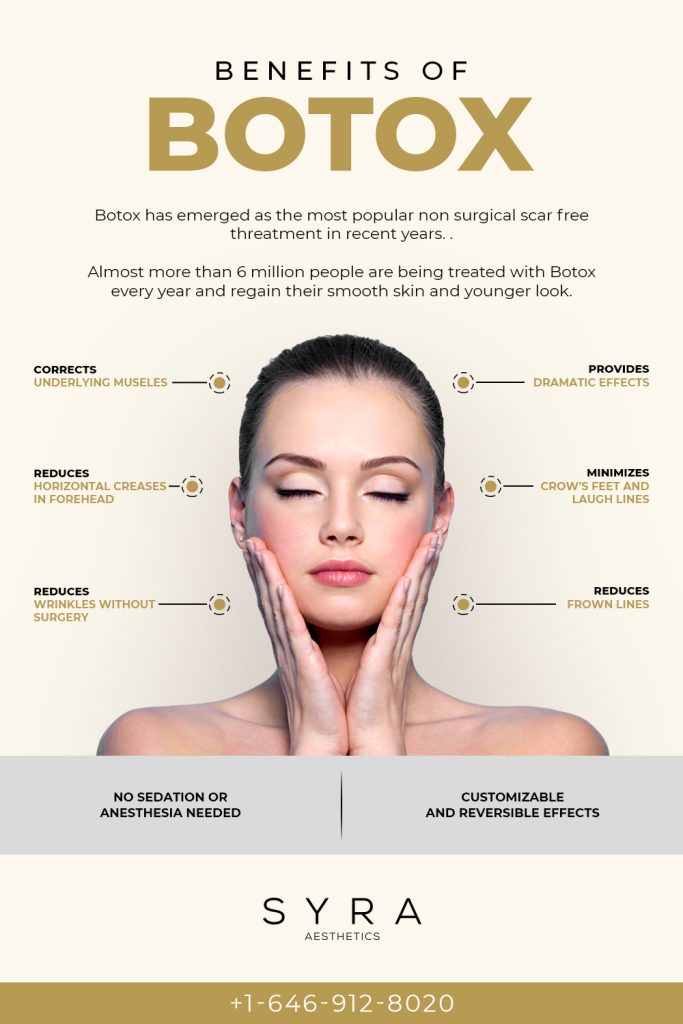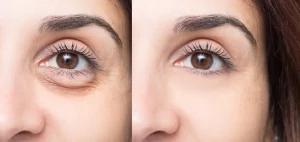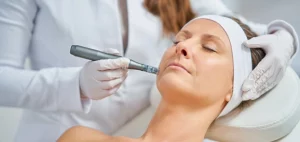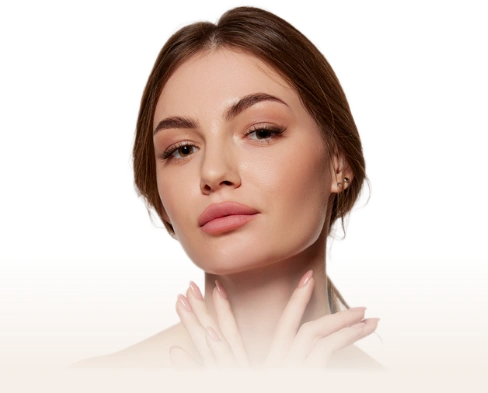Several things can be done to get prepared for a Botox treatment -Especially if you have never had this procedure done before. The most important thing is to make sure that you are comfortable during the process to ensure optimum results. Here are some of the most effective before and after tips for people opting for Botox treatment:
How to Prepare for a Botox Appointment?
Preparing for your Botox appointment ensures a smooth experience and optimal results. Here’s what you need to do:
Botox After Care
For post treatment tips, take these steps to prepare:
Keep Yourself Hydrated
Take proper meals and keep yourself fully hydrated before the treatment. This can be achieved by drinking lots of water, taking an electrolyte beverage, or simply having some fresh juice with some fruits since it’s high in potassium which helps prevent muscle cramps from occurring during the treatment.
Do not consume any spicy food or heavy meals at least 4 hours before the Botox treatment, as they may cause discomfort during the procedure.
Can I wear makeup after Botox?
Avoid applying makeup directly after treatment to allow the skin to breathe. Gentle makeup application can resume after 24 hours.
Can you do red light therapy after Botox?
Red light therapy can be beneficial post-Botox, but consult your provider to ensure it’s safe and appropriate for your treatment.
Can you touch your face after Botox?
Avoid touching or rubbing the treated areas for at least 24 hours to prevent spreading the toxin to unintended muscles.
Can you wash your face after Botox?
Gently cleanse your face without rubbing the treated area for the first day after treatment.
How long after Botox can I drink alcohol?
It’s recommended to wait at least 24 hours before consuming alcohol to minimize the risk of increased bruising and swelling.
Don’t drink alcohol
Avoid alcohol consumption for at least 24 hours post-treatment to support optimal healing.
Beware if You Have Cold Sores
If you have cold sores, it’s important to know if BOTOX can activate the virus. If that happens, your symptoms may get worse before they get better.
If you have dryness or irritation after getting Botox in your mouth and facial area, this usually means that one of the ingredients in BOTOX has been irritating your skin. This can happen even though there are no visible signs of damage on your skin (like redness). It is also possible that some other ingredient in the injection has been irritating your skin too—and if so, this could be contributing to an increase in symptoms like swelling or itching for several days after treatment.
Can I eat spicy food after Botox?
It’s advisable to avoid spicy foods immediately after treatment to reduce the risk of irritation.
Have Someone Drive You Home Post-Treatment
After your Botox treatment, it is important to arrange for someone to drive you home. The last thing you want is to be stranded on the side of the road in the middle of nowhere because you can’t remember how to get back home. If possible, it is best if this person is familiar with where they live and can meet them at their destination.
Ensure Maximum Comfort Post-Treatment
Be prepared to take care of yourself after the treatment. Post treatment instructions include, don’t take any medications that could interfere with the treatment. Don’t drink alcohol before your appointment, as it can cause irritation of the skin and make injections harder to administer correctly.
Botox Pre care
Before your appointment, follow these guidelines for dermal fillers pre care:
What to avoid before Botox?
- Avoid Blood-thinning Medication: Avoid aspirin, ibuprofen, and other blood-thinning medications for about a week before your cosmetic treatments to minimize bruising.
- Alcohol: Refrain from consuming alcohol for at least 24 hours before your appointment to reduce the risk of bleeding and bruising.
- Hydration: Drink plenty of water in the days leading up to your appointment to keep your skin hydrated and plump.
Can you exercise before Botox?
Light exercise is generally fine, but avoid intense workouts on the day of your appointment. Exercise can increase blood flow and lead to more bruising.
What not to eat or drink before Botox?
Avoid consuming large meals immediately before your appointment to minimize discomfort during the Botox procedure.
Things to avoid before botox
Refrain from facials, peels, laser treatments, or other botox treatments that could irritate your skin in the days leading up to your appointment.
Can you drink before Botox?
Minimize caffeine intake and avoid drinking excessive amounts of coffee or caffeinated beverages before your treatment.
What are the benefits of botox?
- Reduction of Wrinkles: Botox is most commonly used to reduce the appearance of facial wrinkles, including crow’s feet, frown lines, and forehead lines.
- Non-Surgical: Botox provides a non-invasive alternative to surgical procedures like facelifts, requiring no incisions or anesthesia.
- Quick Procedure: Treatments are typically quick, often completed within 15-30 minutes.
- Minimal Downtime: There is little to no downtime, allowing patients to return to their normal activities immediately.
- Subtle Results: When administered correctly, Botox can provide natural-looking results that enhance a person’s appearance without making them look “frozen.”
- Preventative Treatment: Botox can be used preventatively to slow the development of deeper wrinkles.
- Customizable: Dosages and treatment areas can be tailored to the individual’s needs and desired outcomes.
- Improved Facial Symmetry: Botox can help correct asymmetries in the face caused by muscle imbalances.
- Lift Effect: It can provide a subtle lift to certain areas, such as the eyebrows, giving a more youthful appearance.
Medical Benefits:
- Migraine Relief: Botox is FDA-approved for the treatment of chronic migraines, helping to reduce the frequency and severity of headache days.
- Hyperhidrosis Treatment: It is effective in treating excessive sweating (hyperhidrosis) in areas like the underarms, palms, and feet.
- Muscle Spasm Relief: Botox can relieve muscle spasms and stiffness, such as those associated with conditions like cervical dystonia.
- Overactive Bladder: It is used to treat symptoms of an overactive bladder, such as urinary incontinence.
- Eye Conditions: Botox is used to treat strabismus (crossed eyes) and blepharospasm (uncontrolled blinking).
- TMJ Disorder Relief: It can alleviate symptoms of temporomandibular joint (TMJ) disorders, such as jaw tension and pain.
- Raynaud’s Disease: Botox may help reduce symptoms of Raynaud’s disease, a condition causing reduced blood flow to extremities.
- Bell’s Palsy: It can be used to relax facial muscles on the affected side in patients with Bell’s palsy, providing symmetry to facial expressions.
General Benefits:
- Boost in Confidence: Improved appearance and reduced symptoms of various medical conditions can lead to a significant boost in self-esteem and confidence.
- Temporary and Reversible: The effects of Botox are temporary, typically lasting 3-4 months, allowing patients to decide if they want to continue with treatments.
- Low Risk: When administered by a qualified professional, Botox is considered safe with a low risk of serious side effects.
Don’t Wear Contact Lenses During The Treatment
Refrain from wearing contact lenses during your Botox session. You might experience some pain and swelling after your dermal filler treatments, so it’s best to wait until this goes away before putting your contacts back again.
Bring a Cold Pack Along For The Treatment
Keep an ice pack in the freezer at home before your treatment and bring it with you to use after treatment, especially if you’re treating areas near your eyes or mouth with jaw Botox or chin Botox.
The cold can help reduce swelling, pain, and bruising in many cases. It also reduces redness and discoloration (including darkening of some hair follicles), itching, and any other side effects that may occur after receiving Botox injections.
Botox Before And After Treatment
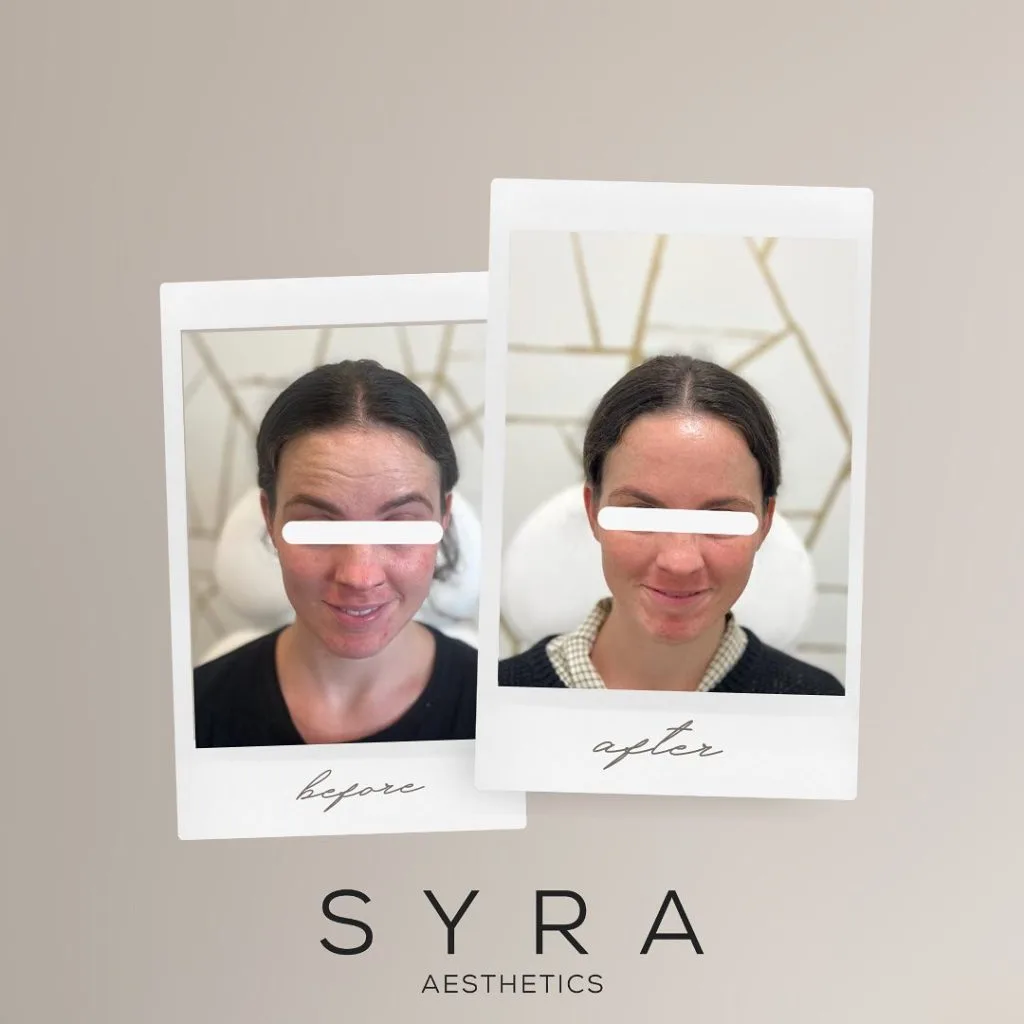
How long does a botox appointment take?
A typical Botox appointment lasts about 15 to 30 minutes, depending on the number of areas treated and your provider’s technique.
How long does it take for Botox to work?
You may start to see initial results within 24 to 48 hours, with full effects visible within 7 to 10 days after treatment.
How to Reduce Swelling After Botox?
To minimize swelling post-treatment, consider:
– Applying ice packs to the treated areas intermittently during the first few hours.
– Avoiding vigorous exercise and heat exposure for the rest of the day.
– Keeping your head elevated while resting to reduce swelling.
Conclusion
The most important thing to remember is that BOTOX is a very gentle treatment, so it’s okay if your face looks a little different after the injections. It may take a little time for the effects to become visible, but once they do they can last for several months. If you have any concerns about your results or want more information on how long they will last, don’t hesitate to ask your doctor.
Frequently Asked Questions
How long does Botox last for?
Botox typically lasts 3-4 months. Results vary, and regular treatments are needed to maintain effects.
Is Botox worth the money?
Many find Botox worthwhile for reducing wrinkles and boosting confidence. Costs vary based on area and provider expertise.
What is the best age to start Botox injections?
Does your face sag after Botox wears off?
Botox wears off gradually, causing muscles to regain activity; sagging isn’t a direct effect but wrinkles may reappear.
Is it worth getting Botox and dermal fillers in your 50s?
Yes, getting Botox and dermal fillers in your 50s can be worth it for many people. These treatments can reduce wrinkles, restore volume, and provide a more youthful appearance. However, results and satisfaction vary, so consult with a qualified professional to discuss your goals and expectations.
Also read:
1. Botox: Treatments, Recovery, and Side Effects
2. Botox Brow Lift Before And After Everything You Need To Know
3. Jeuveau vs Botox: Differences You Should Know
4. Botox Brow Lift Before And After Everything You Need To Know
5. Benefits of Botox – Reverse Your Biological Clock
6. Botox for Sagging Jowls Before and After
7. Botox and Pregnancy

About The Author
Dr. Syra Hanif M.D.
Board Certified Primary Care Physician
Dr. Hanif is the Director of Aesthetic Medicine. She is a board-certified physician in Aesthetic Medicine who specializes in using non-surgical alternatives in order to enhance one's appearance through Botox and fillers.
Read More




